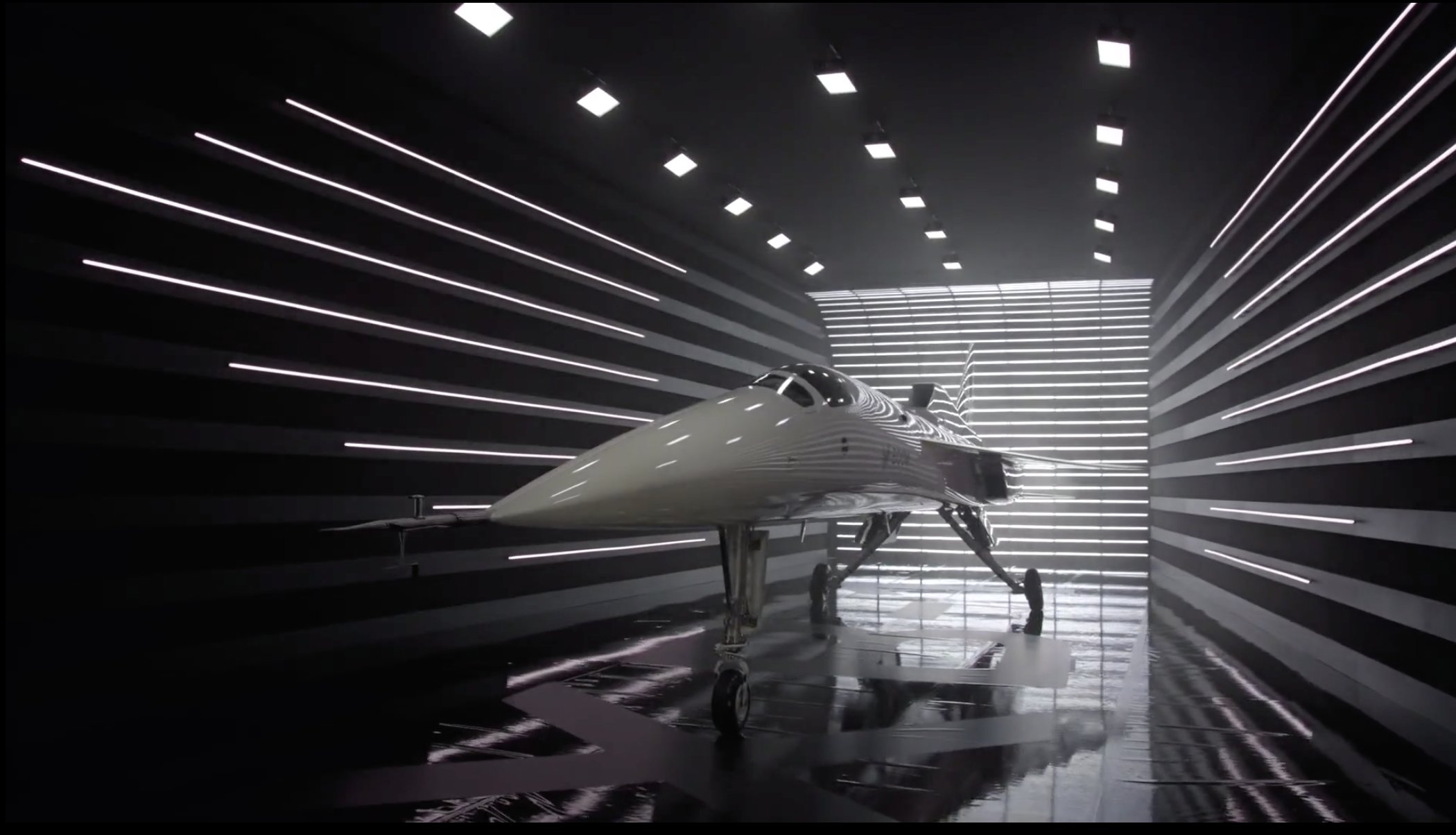Stay Up to Date
Submit your email address to receive the latest industry and Aerospace America news.
Boom Supersonic’s flights of “Baby Boom” to start in mid-2021
Next year, those passing the Mojave Air and Space Port in California might hear the crack of a sonic boom, the telltale sign of an aircraft breaking the sound barrier. The source? A 21.5-meter white-and-black plane dubbed XB-1.
Colorado startup Boom Supersonic today unveiled the XB-1 in a webcast. The carbon fiber demonstrator plane is one-third the size of the planned 65-passenger Overture airliners the company intends to eventually build. With a cruising speed of Mach 2.2, the flight time from Washington, D.C., to Paris would be cut in half to four hours, even with the planes restricted to flying subsonically when over land.
Boom founder and CEO Blake Scholl is betting that these time savings will mean lots of aircraft sales.
“We think we’re going to make more Overtures than Boeing’s made 787s,” he said during the webcast today showcasing the completed XB-1 at Boom’s hangar in Centennial, Colorado.
Plans call for Overtures to start carrying passengers in 2029, a date that depends on a smooth test flight campaign for XB-1. The demonstrator plane, equipped with three General Electric J185 engines, will be shipped to Boom’s offices at the Mojave Air and Space Port “sometime toward the middle of next year,” Scholl said, with flight tests scheduled to start between July and September.
When that time comes, a Boom test pilot will hop into XB-1 and take to the skies between the space port and Edwards Air Force Base, chosen for the supersonic corridor where the U.S. military and companies are permitted to conduct flights above Mach 1 overland; such flights are banned elsewhere in the U.S. In an online briefing with reporters after the webcast, Scholl said that in the first flight the pilot will make several low passes before landing. Because of the craft’s long, tapered nose, the pilot will not have a clear view and must steer the craft with onboard navigation software and cameras on the bottom of the plane’s nose gear.
Over the course of several months, Boom will gradually increase XB-1’s speed to Mach 2.2, the intended cruising speed for Overture. Two former T-38 military training jets will shadow XB-1 during these flights, taking pictures and video, while Boom engineers in the Mojave control room monitor incoming data including airspeed.
Boom has said in the past that the results of the XB-1 flight tests could lead to changes in the design for Overture, so engineers will be paying especially close attention to how features of the demonstrator plane including the delta wing and carbon fiber fuselage withstand the high temperatures and pressures of supersonic speed.
If plans hold, the first flight of an Overture prototype will occur in 2026. Asked about the effect of the coronavirus pandemic on these plans, Scholl said he expects that by the time of Overture’s debut, travel demand will have returned. Airlines and analysts are predicting that air travel will return to pre-pandemic levels in 2024.
“What’s happened along the way is the airlines have cleared the cobwebs out of their fleets,” he said, referring to the large number of planes airlines have retired this year to conserve cash. When airlines are ready to purchase new planes, “we’ve set the stage a couple years from now for a new set of fleet plans” that include supersonic planes like Overture.
About cat hofacker
Cat helps guide our coverage and keeps production of the print magazine on schedule. She became associate editor in 2021 after two years as our staff reporter. Cat joined us in 2019 after covering the 2018 congressional midterm elections as an intern for USA Today.
Related Posts
Stay Up to Date
Submit your email address to receive the latest industry and Aerospace America news.




